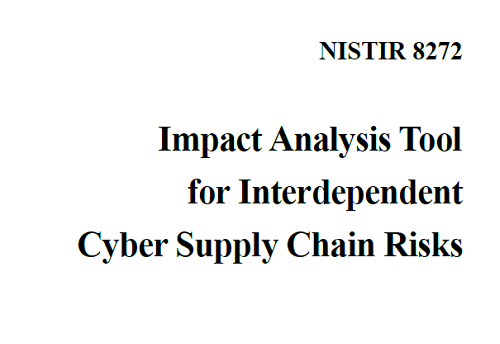More organizations are becoming aware of the importance of identifying cybersecurity risks associated with extensive, complicated supply chains. Several solutions have been developed to help manage supply chains; most focus on contract management or compliance. There is a need to provide organizations with a systematic and more usable way to evaluate the potential impacts of cyber supply chain risks relative to an organization’s risk appetite. This is especially important for organizations with complex supply chains and highly interdependent products and suppliers.
This publication describes one potential way to visualize and measure these impacts: a Cyber Supply Chain Risk Management (C-SCRM) Interdependency Tool (hereafter “Tool”), which is designed to provide a basic measurement of the potential impact of a cyber supply chain event. The Tool is not intended to measure the risk of an event, where risk is defined as a function of threat, vulnerability, likelihood, and impact. Research conducted by the authors of this publication found that, at the time of publication, existing cybersecurity risk tools and research focused on threats, vulnerabilities, and likelihood, but impact was frequently overlooked. Thus, this Tool is intended to bridge that gap and enable users and tool developers to create a more complete understanding of an organization’s risk by measuring impact in their specific environments.
The Tool also provides the user greater visibility over the supply chain and the relative importance of particular projects, products, and suppliers (hereafter referred to as “nodes”) compared to others. This can be determined by examining the metrics that contribute to a node’s importance, such as the amount of access a node has to the acquiring organization’s IT network, physical facilities, and data. By understanding which nodes are the most important in their organization’s supply chain, the user can begin to understand the potential impact a disruption of that node may cause on business operations. The user can then prioritize the completion of risk mitigating actions to reduce the impact a disruption would cause to the organization’s supply chain and overall business.

